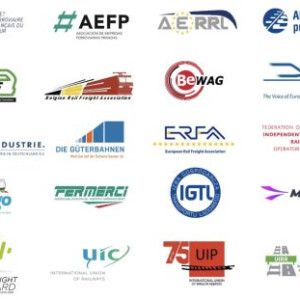‘Weights and Dimensions Directive endangers intermodal developments’

A group of sixteen European associations wrote a joint letter highlighting the persisting issues with the Weights and Dimensions Directive (WDD), part of the Greening Freight Package. The document entails the introduction of bigger trucks (European Modular Systems) which is "incompatible with the Commission's commitment to increase rail freight", the signatories underlined. The introduction of EMS is going to undercut the investments made in rail and create new interoperability issues.
Bigger trucks are not fit to travel on railways or inland waterways. For example, the WDD envisions the introduction of semi-trailers longer than the standard 13,6 metres. This "would be incompatible with a large portion of railway rolling stock and several types of waterborne vessels", the associations said.
Rather than incentivising intermodality and boosting the modal shift to rail, the introduction of EMS "will likely result in a reverse modal shift of up to 21% of rail freight across all segments switching from rail to road", the associations said. This would translate into 6.7 million to 13.3 million additional truck journeys per year, the signatories stressed. Bigger trucks, other than not being interoperable with other modes of transport, will also likely make road freight even more attractive.
Rail investments and road safety endangered
Other risks highlighted by the 16 associations include a negative impact on rail investments as well as road safety and wear and tear.
Companies and governments in Europe are investing heavily in improving rail assets, from infrastructure to rolling stock and terminals. The deployment of EMS would introduce new challenges and requirements. First, it might make the investments already undertaken null, but, moreover, it would require additional investments to adapt the infrastructure, creating a vicious cycle rather than fixing the problem.
Regarding the impact of EMS on European roads, the 16 signatories stressed that longer and heavier vehicles will likely increase the risk of accidents. Plus, accidents involving bigger trucks are more prone to cause worse accidents. Moreover, the associations said that EMS will probably be deployed for the transport of dangerous goods.
This trend "raises important safety concerns that remain insufficiently addressed", they added. Dangerous goods, they claimed, belong to those modes of transport that have historically accommodated it such as rail and inland waterways. Finally, another interesting point raised by the 16 signatories is that there are no requirements for drivers of longer and heavier trains.
In other words, these behemothic vehicles might be driven by young and inexperienced drivers. "It may be reasonably assumed that less experienced drivers as young as 18 will be allowed into the driver's seat of these longer and heavier trucks thus exacerbating accident risks", they concluded.
 The 16 signatories who sounded the alarm on the Weights and Dimensions Directive. Image: Screenshot from the letter
The 16 signatories who sounded the alarm on the Weights and Dimensions Directive. Image: Screenshot from the letter
Subscribe to gain access to all news
Already have a subscription? Log in[1].
Choose your subscription
Or
Want to read this article for free?
You can read one free article per month.
Enter your email and we'll send you a free link to access the full article.
No payment required.